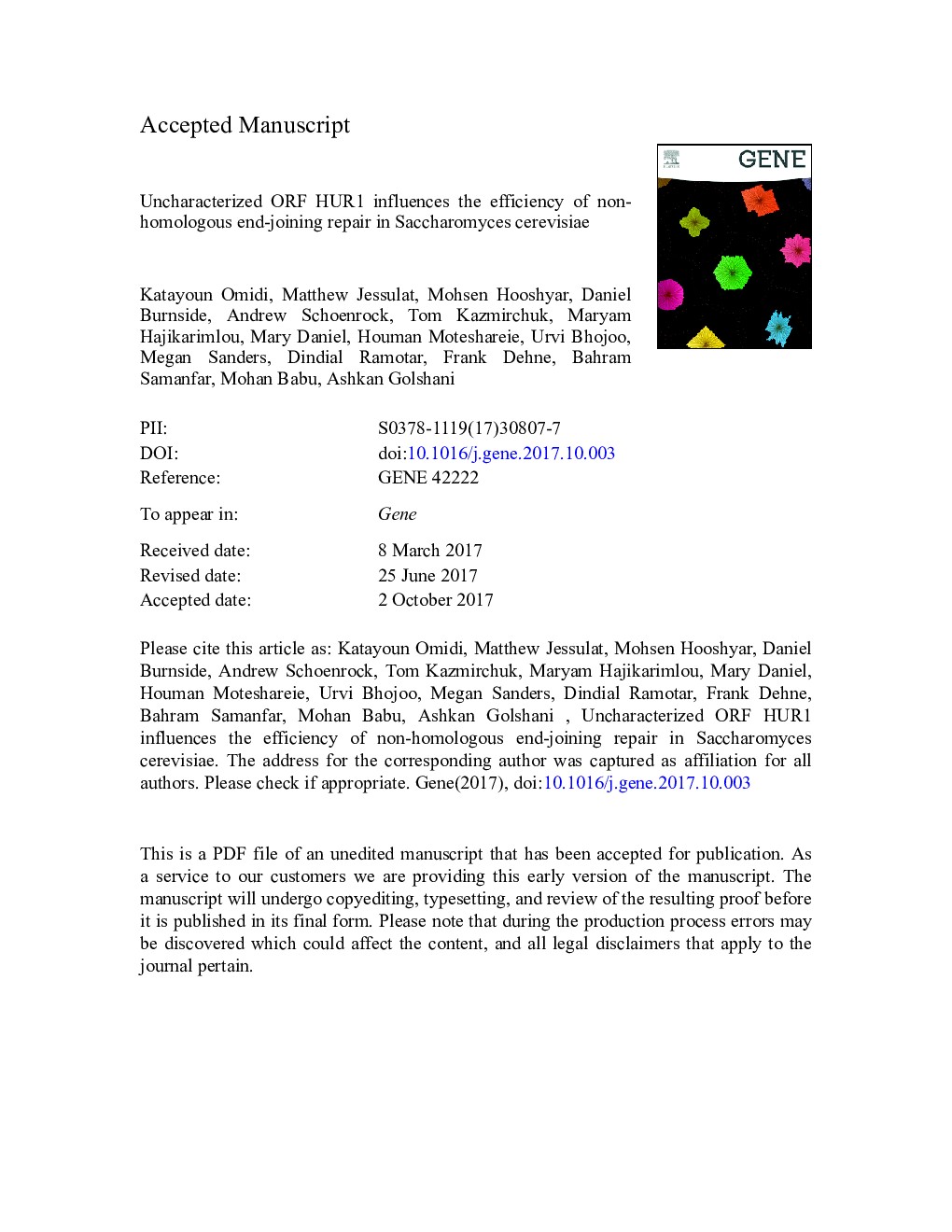| Article ID | Journal | Published Year | Pages | File Type |
|---|---|---|---|---|
| 5589451 | Gene | 2018 | 38 Pages |
Abstract
Non-Homologous End Joining (NHEJ) is a highly conserved pathway that repairs Double-Strand Breaks (DSBs) within DNA. Here we show that the deletion of yeast uncharacterized ORF HUR1, Hydroxyurea Resistance1 affects the efficiency of NHEJ. Our findings are supported by Protein-Protein Interaction (PPI), genetic interaction and drug sensitivity analyses. To assess the activity of HUR1 in DSB repair, we deleted its non-overlapping region with PMR1, referred to as HUR1-A. We observed that similar to deletion of TPK1 and NEJ1, and unlike YKU70 (important for NHEJ of DNA with overhang and not blunt end), deletion of HUR1-A reduced the efficiency of NHEJ in both overhang and blunt end plasmid repair assays. Similarly, a chromosomal repair assay showed a reduction for repair efficiency when HUR1-A was deleted. In agreement with a functional connection for Hur1p with Tpk1p and NEJ1p, double mutant strains Îhur1-A/Îtpk1, and Îhur1-A/Înej1 showed the same reduction in the efficiency of plasmid repair, compared to both single deletion strains. Also, using a Homologous Recombination (HR) specific plasmid-based DSB repair assay we observed that deletion of HUR1-A influenced the efficiency of HR repair, suggesting that HUR1 might also play additional roles in other DNA repair pathways.
Keywords
Related Topics
Life Sciences
Biochemistry, Genetics and Molecular Biology
Genetics
Authors
Katayoun Omidi, Matthew Jessulat, Mohsen Hooshyar, Daniel Burnside, Andrew Schoenrock, Tom Kazmirchuk, Maryam Hajikarimlou, Mary Daniel, Houman Moteshareie, Urvi Bhojoo, Megan Sanders, Dindial Ramotar, Frank Dehne, Bahram Samanfar, Mohan Babu,
